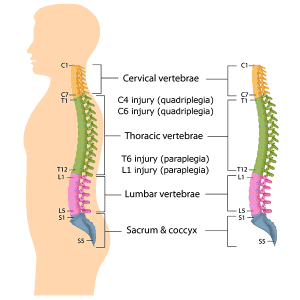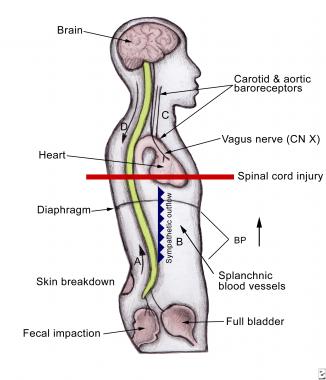It’s my 6th week here at Hohman, and I must say the time is absolutely flying by. After this week I only have 6 more weeks here and I can’t believe it! It’s been such a great experience and I’ve been learning so much. Which brings me to the topic of my discussion this week given the fact that I have had the immense pleasure of working with a patient who has had a spinal cord injury.
What are Spinal Cord Injuries
Spinal Cord Injuries (SCI) are complicated injuries. Often times SCIs are associated with some sort of traumatic event that directly affects some level of your spinal cord. Our spinal cords are responsible for a lot of the functioning of our bodies. From sensation, motor functions, reflexes of your arms/legs, in addition to controlling your ability to breathe, ability to use the restroom, or eat. Given the level at which someone has had a spinal cord injury, these abilities can be affected. It can also affect some or all of your limbs.
Most often spinal cord injuries can be divided into 2 categories. Paraplegia which can cause paresthesia (loss of sensation) and/or impaired motor function of the lower limbs. Also, quadriplegia, which can have the same affect but affects both the arms and legs. SCIs are complicated because they can also be classified as either complete or incomplete. Then these classifications can further be divided from A to D. Phew! That does seem like a lot to understand, hence why these are complicated Injuries.
How PT Helps
No matter the level, there is a lot of promise for patients who have suffered SCIs. Physical therapy plays a very integral role in rehabilitation. Initially treatment is focused on preserving the motor functions that are still available. Also, developing a compensatory approach that allows for independence with activities of daily living as much as possible. For limbs that may not possess the full motor abilities, therapists and other caregivers can and still should move these joints and limbs passively to encourage blood flow, reduce incidence of pressure ulcers and atrophy. Once compensatory movements of the head, trunk, hips, and limbs have been established then typically therapy will advance to a more restorative approach that truly emphasizes more independence with more advanced activities.
It has been such a rewarding experience for me being able to treat someone with an SCI. And while the diagnosis presents physical, emotional, and mental limitations, it’s important to be surrounded by a supportive and encouraging team to help with all facets of the recovery process. Like any diagnosis, prognosis is solely based on a case by case basis. With PT intervention much is to be accomplished!



